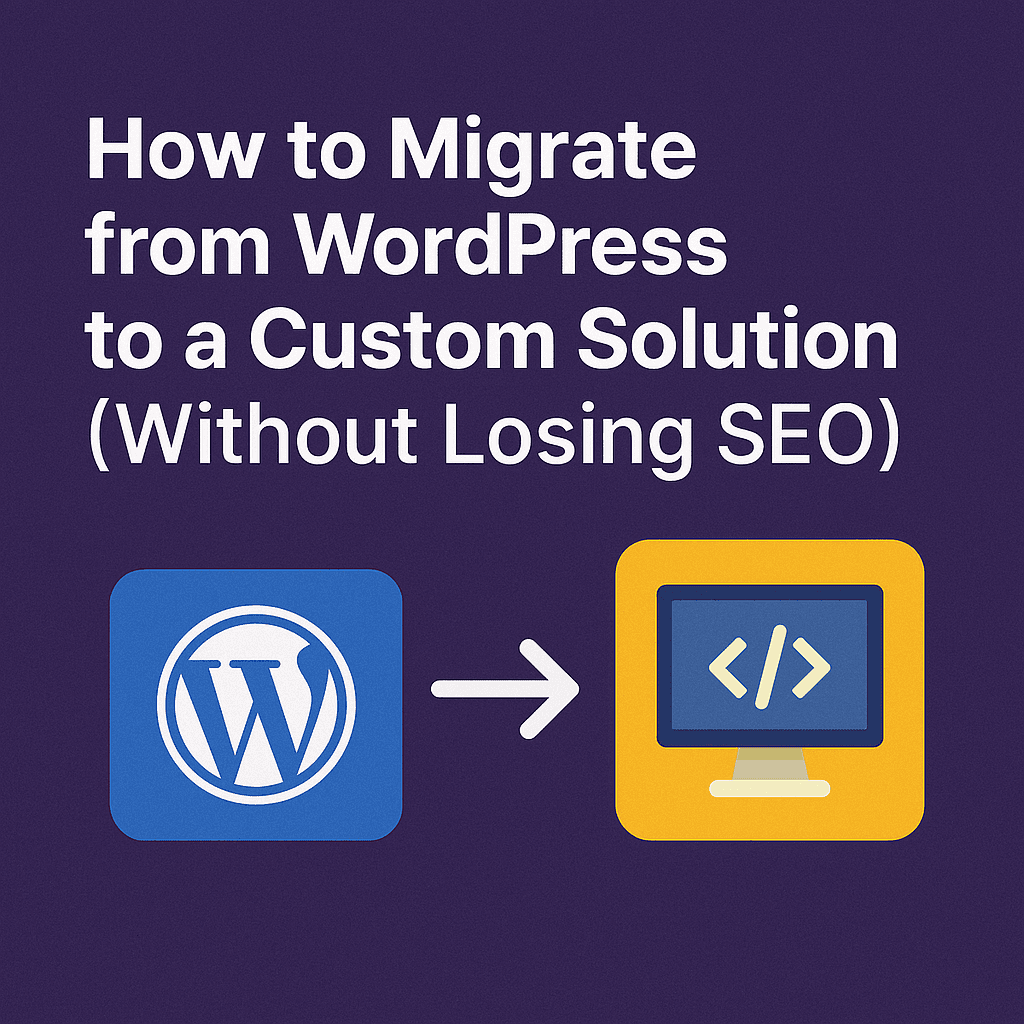Migrating from WordPress to a Custom Solution: What You Need to Know

Migrating from WordPress to a custom solution can be a game-changer for your business — but it comes with both great opportunities and hidden risks.
If you're tired of plugin overload, slow speeds, or limitations in design and performance, moving to something like Next.js + Strapi can give you complete control over performance, SEO, and flexibility.
But before you start, there are some important things to be aware of.
Why businesses consider migration
For many business owners, the first sign is frustration:
- The site feels slow, even after optimization.
- You're paying for plugins that still don't solve your needs.
- Design is restricted by templates.
- Updates are risky and can break the site.
- You want future-proof architecture.
Moving to a custom solution allows you to build exactly what your business needs — nothing more, nothing less.
Benefits of migrating to a custom solution
- Performance boost: With Next.js, you can serve static pages, use server-side rendering, and optimize loading times dramatically.
- SEO improvements: Total control over meta tags, Open Graph, sitemap, structured data, and performance (all ranking factors).
- Scalability: No longer limited by plugins or WordPress architecture. Add features as your business grows.
- Security: Smaller attack surface. You only run the code you write and trust.
- Developer freedom: You can finally build exactly what your vision requires, without hacks.
What to watch out for during migration
While the benefits are clear, migrations are never just "copy and paste." Here’s what you need to prepare for:
- SEO migration risks: URLs, redirects, metadata, and internal linking must be preserved.
- Content transfer: You’ll need to export your posts, media, and custom fields and re-import them to your new CMS (like Strapi).
- Design replication or upgrade: Decide whether to replicate your current design or take the chance to redesign.
- Third-party tools: Things like forms, analytics, and integrations need to be reconnected.
- Testing: Test everything — broken links, speed, responsiveness, and SEO metadata.
Tips for a smooth migration
- Start by auditing your current pages and structure. Check what works well and what should be improved.
- Preserve your URL structure as much as possible to avoid SEO drops.
- Use proper redirects (301) to guide Google and users to your new pages.
- Test staging environments thoroughly before you go live.
- Set up monitoring tools (Google Search Console, Analytics) immediately after launch.
Is it worth it?
If you're aiming for performance, customizability, and future growth, migrating from WordPress to a custom solution like Next.js and Strapi is often a smart investment.
Yes, it takes planning — but in the long term, it will give you full control and eliminate many of the frustrations that come with traditional platforms.
My suggestion
Don’t rush the migration. Take the opportunity to clean up your content, improve your SEO, and build a faster, more modern website.
And if you’re not sure where to start, I can help you audit your current website and plan a safe migration path. Feel free to reach out!